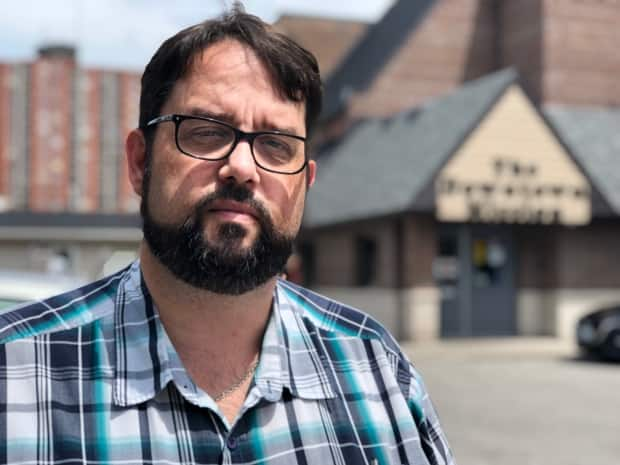197 people are homeless in Windsor-Essex on any given night
At the five-year mark, a report on the Windsor-Essex Housing and Homelessness Master Plan shows there's still work to be done.
The city first established its 10-year housing and homelessness plan in 2014 — outlining goals and strategies to expand housing stock and meet the needs of Windsor's homeless population.
According to this year's report, 2,048 households accessed interim housing at a combined rate of 11 days per household.
Women
648 single women stayed at the Welcome Centre Shelter for Women — down six per cent from 2017 to 2018.
Total nights stayed (for single women) at the Welcome Centre tallied at 6,062 — up 25 per cent. An average length of stay was 9.4 days.
The Downtown Mission hosted an average of 49 women per month — up 53.8 per cent.
Men
872 single men stayed at the Salvation Army — down one per cent.
Total nights stayed at the Salvation Army (for single men) tallied at 8,055 — down one per cent. An average length of stay was 9.2 days.
At the Downtown Mission, 155 men were seen on average each month — up 18.7 per cent from 2017.
Families
528 families stayed at the Welcome Centre Shelter for Women for an average of 14 days each — up 73 per cent.
Total nights stayed (for families) at the Welcome Centre Shelter for Women tallied at 7,408 — up 51 per cent.
The Downtown Mission saw an average of 19 families per month, up 22.9 per cent from 2017.
Increase in women especially troubling for Mission, Welcome Centre
Penny Smith has been a volunteer at the Downtown Mission for almost six years. She currently shares a home with her boyfriend, though she says they'll have to move within the next three months.
Smith currently lives on a pension that covers the cost of her rent — approximately $450-per-month — and the cost of ancillary expenses.
She says she'd like to continue paying $450-per-month, but some homes cost upwards of $1,000 — a cost she isn't able to afford.
In the past, Smith said she's relied on the Downtown Mission for support, and she added she now sees more women visiting the mission for help.

"Our shelter is only built for 12 women," said Downtown Mission executive director Ron Dunn. "I'm not sure what the increase is coming from."
Dunn said the housing crisis is to blame for the numbers overall, and that the Mission tries to treat everyone who comes for service the same.
"We're consistent for how we treat men and women, and our transgender community as well," said Dunn. "It doesn't matter who you are, it's about trying to get you re-housed as soon as possible."
A point-in-time street count was conducted over a 24-hour time period in mid-April 2018. Results of that count — conducted by 200 volunteers — showed that 69 per cent of the people on the street were single adults, with 27 per cent being families. Four per cent were youth.

According to the data collected, 80 per cent of those people were on Ontario Works or Ontario disability.
Lady Laforet, executive director of the Welcome Centre Shelter for Women said the homelessness numbers have a lot to do with affordability and availability.
"You're looking at needing first, last, deposits, a police clearance ... a lot of the women we serve don't meet a lot of those demands," said Laforet. "Then landlords don't tend to choose women or families who are on Ontario Works."
Laforet said income support rates haven't changed in "decades" but the cost of living has.
"If you are to get into a rental that isn't feasible long-term, the movement into another unit you can't afford is next to impossible."
According to Laforet, it's a "landlord's game" and competition has increased, with some landlords are only looking to rent to students, rather than adult women.
Joyce Zuk, executive director of Family Services Windsor Essex, said it makes sense that as space tightens up across the board, women will be affected too.
"It's a trend that we're going to continue to see," said Zuk. "It goes hand in hand with the fact that we're seeing families needing to access shelter too."
Zuk said the problem isn't unique to Windsor-Essex, but exists across the country.
"We're seeing the price of housing going up," said Zuk. "Historically, our community has been one of the most affordable places to live. That has significantly changed."

According to Zuk, in the past a friend may have been more likely to let a woman crash on their couch, but that's changed.
"What we really need is to see a significant investment and build in housing," said Zuk. "It's not going to happen overnight."
The typical recipient of Ontario Disability receives about $600 — finding affordable housing at that rate is a "hard issue" said Zuk.
"Sometimes you end up with this gap, where there is nothing in between," said Laforet. At the Welcome Centre, the length of time someone can stay varies depending on each individual's circumstances.
Laforet said typically what you're dealing with is a woman or a family "not unlike the one you're standing behind at the grocery store."
"They want to find a place to feel safe,to call home," said Laforet, adding that the people the Welcome Centre sees aren't necessarily those with addiction or mental health problems.
"At the end of the day, it comes down to a housing issue."


